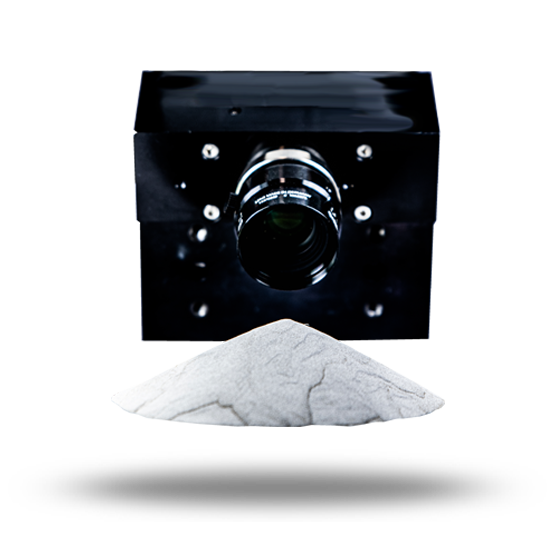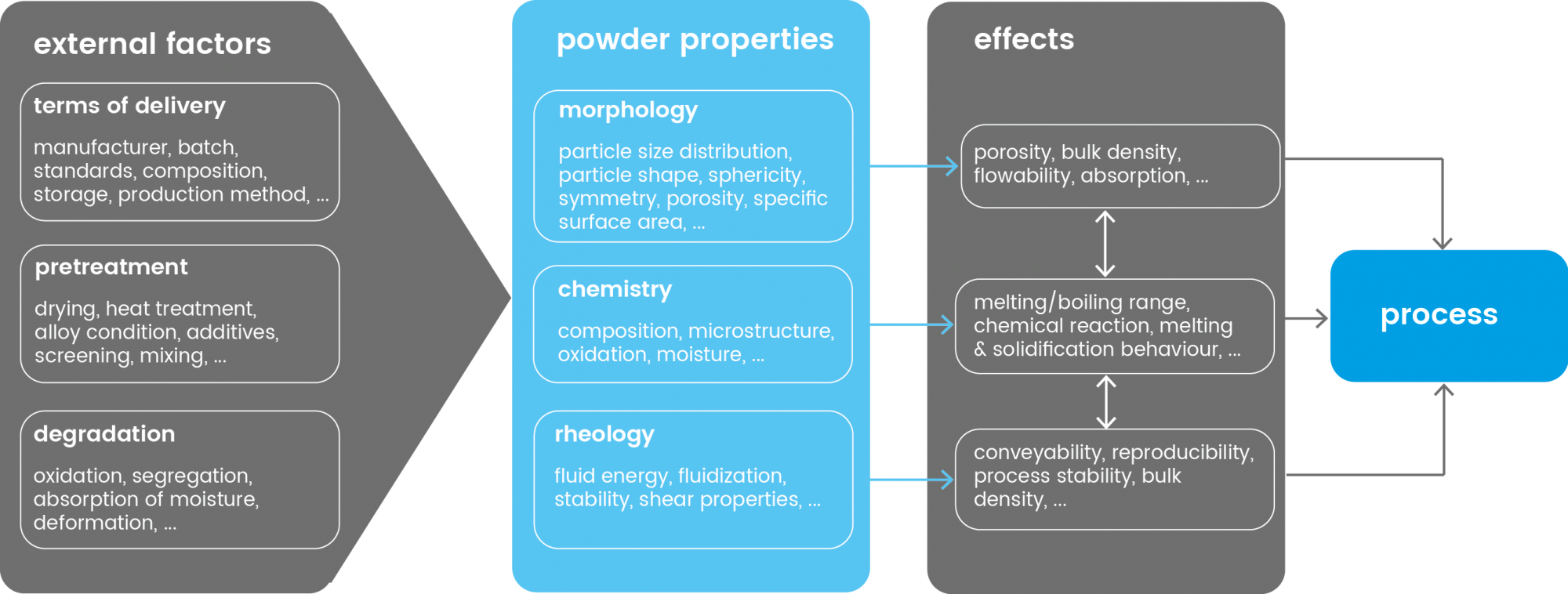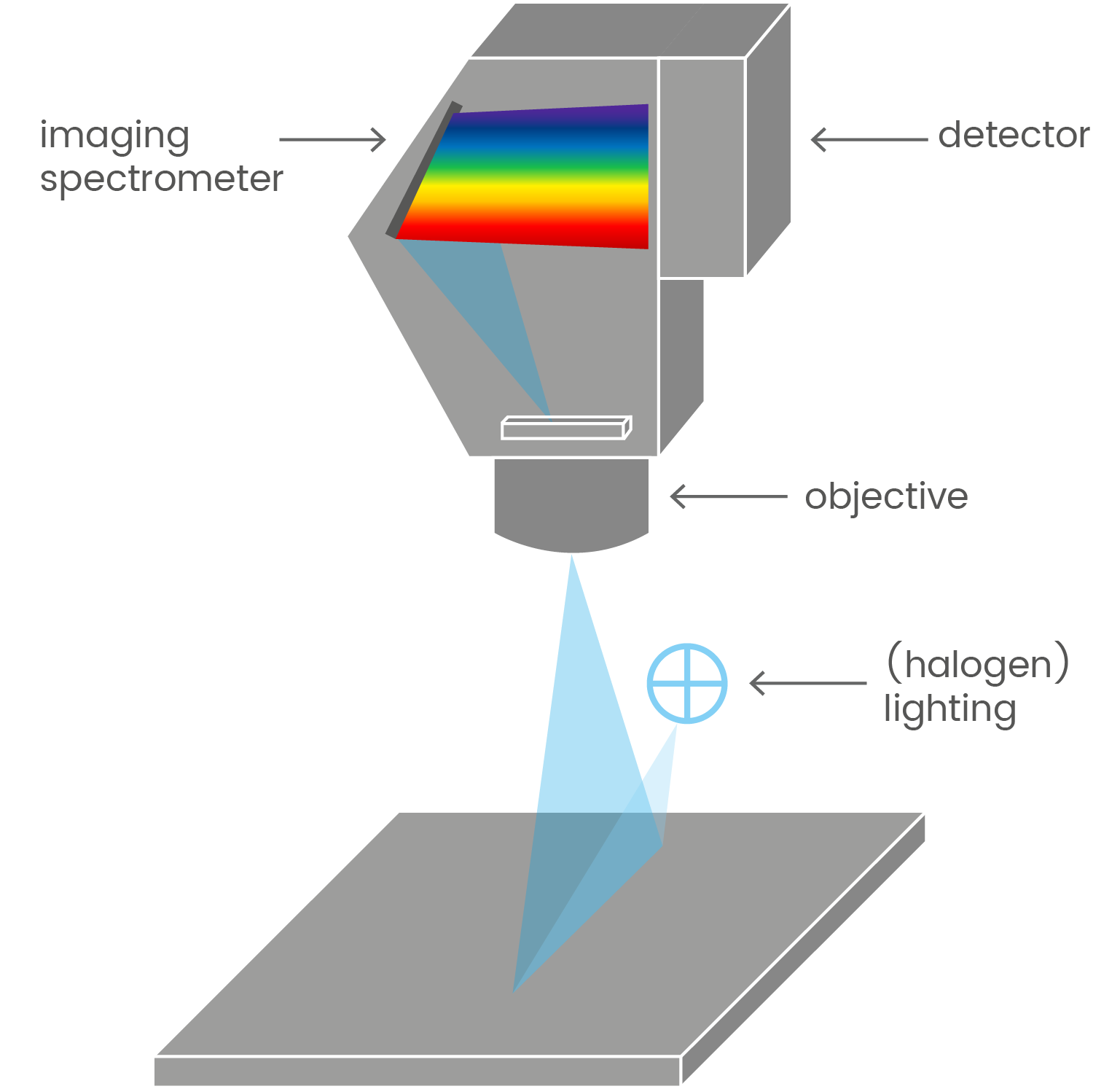Technology Project
HSI4AM

Objective:
Hyperspectral imaging for process-specific qualification of powders for selective laser melting
Partners:
Duration: 01.11.2019 - 31.10.2021
overall objective
The long-term goal of the HSI4AM project is to increase the lifetime of powders for generative manufacturing and thereby increase the resource efficiency of generative manufacturing while reducing production costs and still ensuring high quality of the components produced. To this end, it is to be investigated whether a fast and non-contact prediction of certain relevant powder properties is possible using hyperspectral imaging (HSI) and the use of machine learning methods. The properties to be investigated include rheological, morphological and chemical characteristics of the powders. In addition, a "Powder Information Management System" (PIMS) for central storage of all relevant powder properties and metadata will be established.
Specifically, in the Inconel project, 718 powders are to be extracted from various stages of their life cycle and extensively characterized with respect to rheology, morphology and chemical properties. In addition, different methods of hyperspectral formation will be investigated. The data obtained will then be used to train and validate prediction models.
powder-process interactions
The comprehensive characterization of powder plays a decisive role in additive manufacturing (AM). In the metal powder processing industry, comprehensive powder characterization is an important prerequisite for processability and an important part of quality assurance. Despite the efforts of powder manufacturers to provide reproducible powders, even minimal process deviations can lead to changes in powder properties and thus influence processability. This represents a particular challenge in the processing of metal powders in powder processing additive manufacturing processes such as nozzle-based laser powder deposition welding (LMD) and the powder bed processes Laser Powder Bed Fusion (LPBF) or Electron Beam Melting (EBM).
The performance of these processes depends largely on the specific powder properties. These mainly affect the powder morphology, chemistry and rheology. In addition to the material-immanent properties (mechanical properties, reactivity), the performance of the final component is also largely influenced by the powder properties (see figure). For this reason, the powders used must also be subjected to characterization before use to ensure reproducible process results.
The interaction of the factors of the powder properties determines the "quality" of the powder with regard to processing with additive manufacturing processes. This requires a detailed characterization of the powders with regard to morphology, rheology and chemistry.

Figure 1: interactions between powder and process
hyperspectral imaging (HSI)
Hyperspectral imaging is a technology for fast and complete measurement of spectral properties of large sample surfaces. It thus enables the spatially resolved acquisition of the chemical and morphological properties of the sample under investigation. Typical HSI systems work as line scan cameras (see Figure 2).

Figure 2: HSI system
No industrial implementations of the HSI in additive manufacturing and related technology areas are known so far. Only in the field of laser beam melting there are investigations on the application of hyperspectral imaging, whereby these are limited to the determination of the melting bath temperature and size.
The characterization of AM powder materials by HSI has also not yet been described in the literature. Usually, the characterization of AM powders is performed by elaborate offline methods. There is no continuous monitoring of the powder quality during the production process. It is currently completely unclear whether or to what extent additional information can be generated by HSI and to what extent this information can then be used advantageously for the characterisation of powder materials. First preliminary tests show, however, that information about morphological properties as well as chemical changes could be obtained.
powder information management system
In the course of the characterization of a powder, a large amount of different data is recorded during its life cycle. The digitization of the values recorded by powder characterization methods can be used to create a digital image (digital twin) of the powder during its life cycle.
In the project, extensive data on the properties, history and process data of the powders investigated are to be recorded and stored in the PIMS. This will enable the comparison and linking of the powder data and statistical methods can be applied to the data.

Figure 3: powder information management system
approach to powder qualification
The collected data from the powder characterization and the hyperspectral measurements will be used to train the prediction model. The aim is to find statistical correlations between the hyperspectral measurements and the powder properties. After training and validation of the models found, they can be used to predict the properties of new powder samples. Ideally, this provides the opportunity to estimate powder properties quickly, contactlessly and inline, and thus to monitor powder quality.